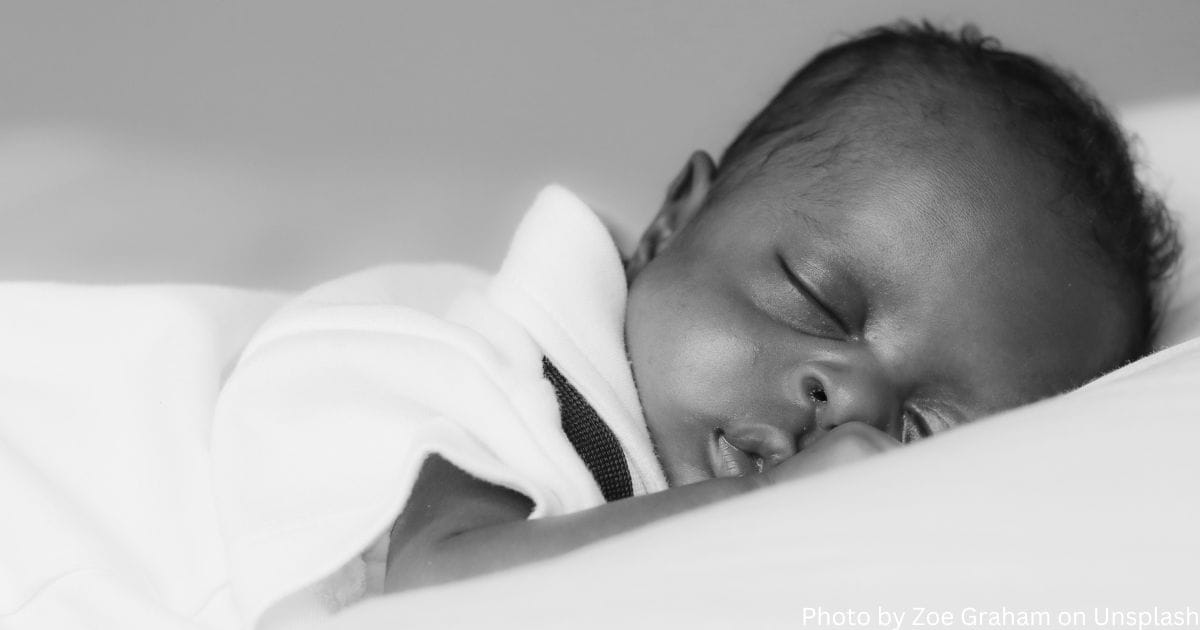As the state of Illinois commits more resources to keeping infants safe in bed, experts are reminding you about the best practices: infants should sleep on their back on a flat, firm fitted sheet, and they should be alone on that surface.
The state of Illinois is committing more resources to keeping infants safe in bed. And for the first time since 2016, the American Academy of Pediatrics (AAP) has dusted off its guidelines for safe infant sleep. While much of the update reemphasizes established practices, experts say it bears repeating in order to reduce infant sleep deaths, of which the United States sees around 3,500 per year.
Cristy Shafer manages obstetrics at OSF HealthCare Heart of Mary Medical Center in Urbana, Illinois. The Blessed Beginnings Birthing Center at OSF Heart of Mary was recently certified as a safe sleep hospital by Cribs for Kids, a nationwide group that promotes sleep safety. The certification recognizes OSF Mission Partners’ (employees) community outreach and thorough education with new parents on safe sleep.
Shafer says when it comes to the new AAP guidelines, the main takeaways are these: infants should sleep on their back on a flat, firm fitted sheet, and they should be alone on that surface.
Back vs. stomach
Shafer says the sleep on back vs. sleep on stomach debate boils down to anatomy.
“There’s actually a larger airway opening [when on their back]. So they are able to either swallow back down what they have in there or actually cough it up and get it out of the airway,” Shafer says. “If they’re on their tummy, you’re decreasing that opening of the airway.”
“The other part is if they put their head straight down, they’re putting their head straight down into whatever they’re lying on top of,” Shafer adds. “So you decrease the amount of air that they’re able to get in. Whereas when you’re lying on the back, you don’t have that as an option.”
Flat surface vs. inclined surface
Shafer says it’s inevitable that an infant will fall asleep, for example, in a stroller or a car seat. But the adult is there to check on the child. At night, Shafer and other experts say to avoid surfaces with more than a 10% incline, like rockers. Inclined surfaces may cause the child to sleep with their chin tucked to their chest, restricting their breathing. Infants can also roll out of these devices.
Firm sheet vs. loose objects
Shafer says there’s no one magic way to prevent infant sleeping deaths. But over the years, she’s seen a pattern of new parents doing things the way their mother or grandmother did, not knowing it’s outdated and unsafe. For example, parents from older generations may have adorned their infant’s crib with puffy blankets or stuffed animals to make for a pretty picture for the photo album. But each of those objects could restrict the child’s breathing if they roll over while sleeping.
Shafer says if you’re worried about your baby getting cold, don’t grab the traditional blanket. Rather, add more clothing to the little one or use a zip-up blanket that they can’t roll into.
Crib bumpers are passé, too, Shafer says. Rather, look for cribs with slats that are no further apart than two and a half inches, or the length of one of those pink rectangle erasers.
“In today’s society, we’re looking at what we’re spending a lot more closely because of how the economy is,” Shafer says. “So if I am going to borrow great grandma’s crib or grandma’s crib, it might not be up to code for what those slats are supposed to be. So we want to make sure that we are having safe, quality things in the home as far as the sleeping environment.”
Bed sharing vs. room sharing
The AAP recommends parents sleep in the same room as their infant for at least the first six months.
Some parents, though, want their new child in bed as a bonding experience. That’s a hard no from Shafer.
“Very dangerous,” she says.
“Parents are tired. When they finally get that chance to sleep, they’re not easy to arouse most of the time,” Shafer says. “You find breastfeeding moms are a little bit easier to arouse because they’re so used to waking up when that baby’s crying and rolling over and trying to get the feeding going. But oftentimes, if that baby’s sleeping longer periods, if it’s got more of the formula or milk in its stomach, it’s going to sleep longer also.”
“[Adults] get to that deep sleep pattern and you’re not aware when you’re rolling around the bed,” Shafer adds. “So you can have those times when the parents have actually rolled over on top of the infant and not know that they’ve done that. Or the babies rolled up so close against them that they’ve had issues getting air.”
If you have questions about safe sleep for your infant, talk to your OBGYN or primary care provider.
This article originally appeared on OSF Healthcare.






